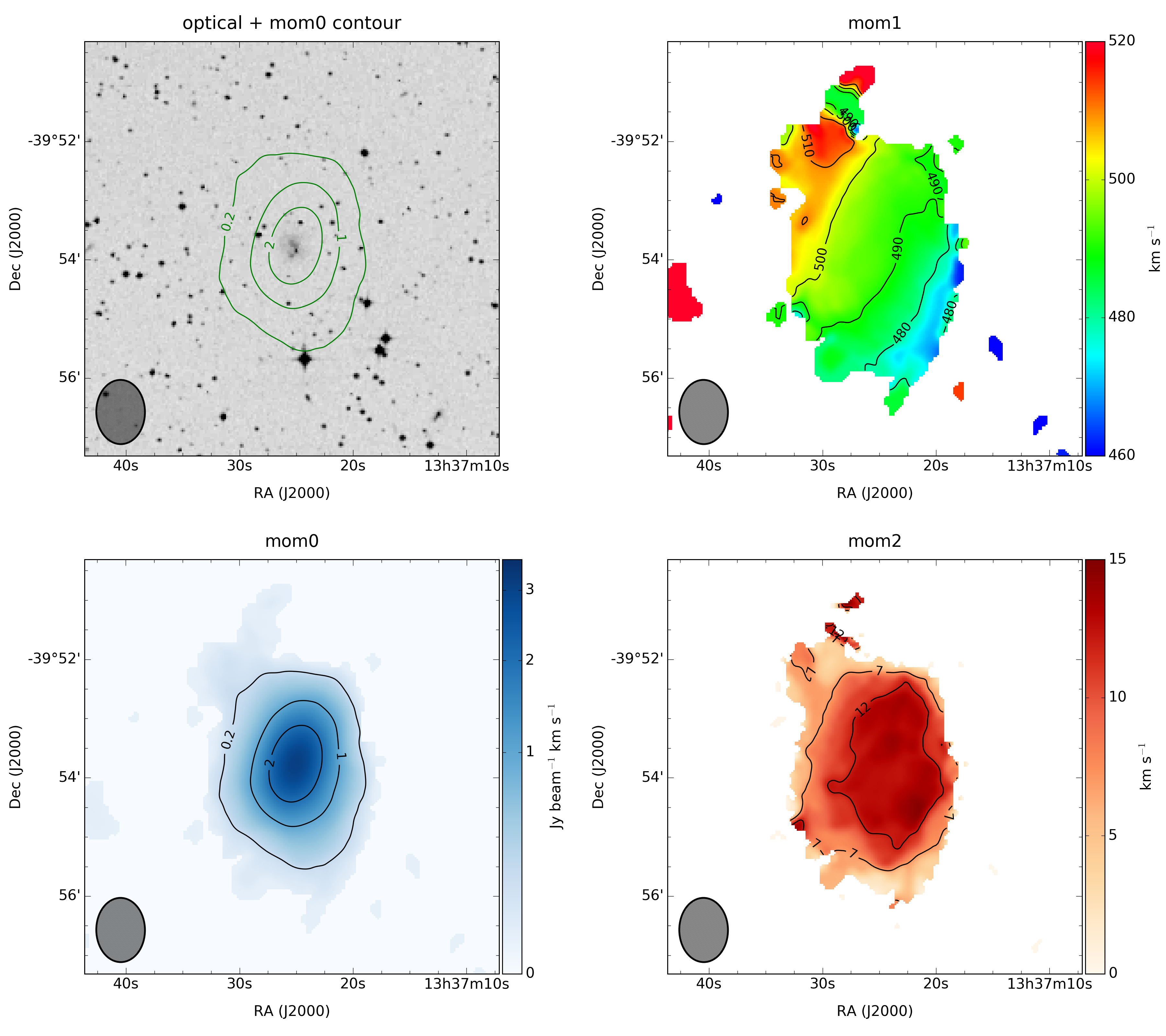HIPASS J1337-39

HIPASS J1337-39
appears to be an old dwarf galaxy at a TRGB distance of 4.83 ±
0.20 Mpc (Grossi et al. 2007). It is located in the outskirts of the Cen A
group, ~4 degries from NGC 5128. Its closest known neighbour is ESO 325-G?011,
~2.5 degrees to the south. HIPASS J1337-39's near spherical stellar
distribution (diameter ~40 arcsec) resembles that of dSph galaxies, while the
ongoing star formation activity, as revealed by the detected Hα emission
(Grossi et al. 2007), is more typical of dIrr galaxies. Our low-resolution
ATCA HI moment maps show a symmetric, regularly rotating disc aligned NE to
SW. Its centre position is α,δ(J2000) = 13:37:25, -39:53:46.7,
in agreement with the optical centre. In contrast, at high resolution the HI
distribution is elongated is the direction perpendicular to the main rotation
axis and the velocity field and dispersion becomes noticeably more irregular.
The ATCA HI moment maps shown by Grossi et al. (2007), at a resolution of
31 arcsec × 24 arcsec, reveal a NW extension with a distinct velocity
field (possibly an accreted HI gas cloud or companion that triggered the
recent SF). The overall impression is that of a dwarf transitional galaxy. We
find FHI = 6.9 Jy km/s, comparable to Grossi's FHI =
7.2 Jy km/s and in agreement with the HIPASS FHI of 6.6 ± 1.8
Jy km/s (Koribalski et al. 2004), and derive MHI = 3.8 ×
107 M☉. HIPASS J1337-39 somewhat resembles the
Sagittarius dwarf irregular galaxy (SagDIG; HIPASS J1929-17; D = 1.16 Mpc)
which is located in the outskirts of the Local Group (Hunter et al. 2012;
Begum et al. 2006; Higgs et al. 2016).
Reference:
Koribalski et al. 2018
* LVHIS database
* LVHIS homepage
* next